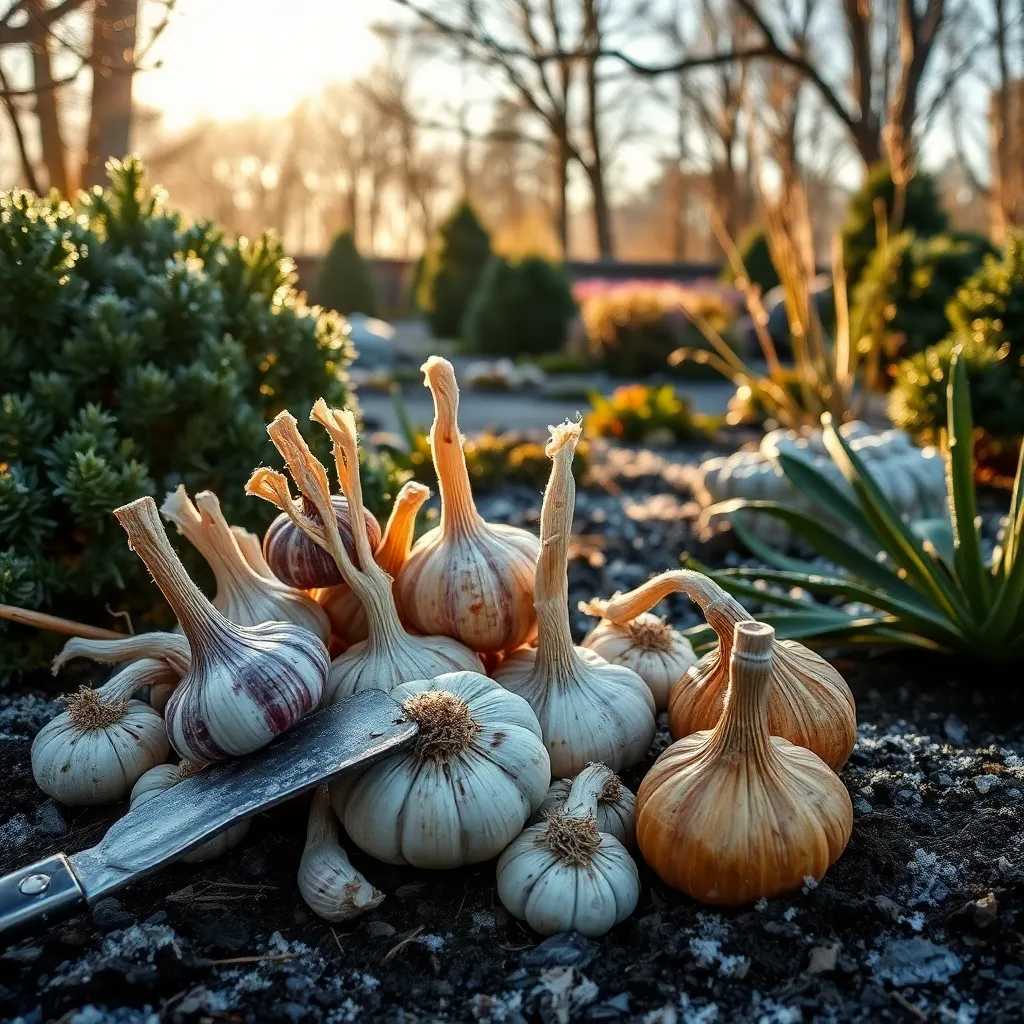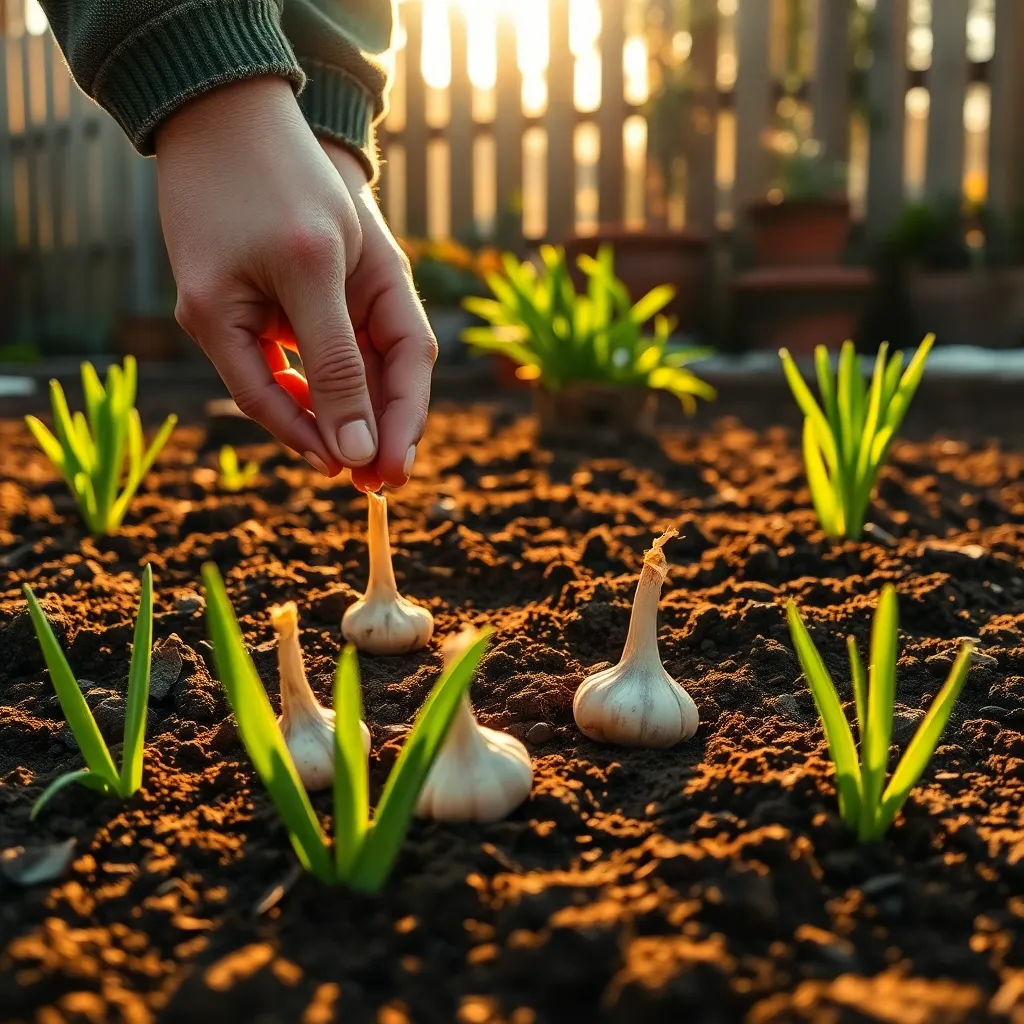As the days grow shorter and the air turns crisp, many might think it’s time to pack away the gardening gloves until spring. However, winter offers a unique opportunity to plant garlic, a robust and rewarding crop that thrives in the cold. For both novice gardeners and seasoned green thumbs, planting garlic in winter is a delightful way to keep your hands in the soil and your spirit connected to the garden year-round. This ancient practice not only enriches your culinary endeavors but also enhances your garden’s ecosystem with its natural pest-repellent properties.
Winter planting might sound daunting at first, but it’s a straightforward and gratifying process with the right guidance. In this article, you’ll learn how to select the best garlic varieties, prepare your soil for optimal growth, and care for your plants through the chilly months. Whether you’re aiming for a bountiful harvest to spice up your kitchen or seeking to expand your gardening know-how, planting garlic in winter is a fantastic endeavor. Together, we’ll explore each step with practical tips and insights to ensure your garlic garden thrives.
The beauty of winter garlic planting lies in its simplicity and the promise of future rewards. You’ll discover how to harness the season’s natural rhythms to cultivate a crop that’s as nourishing as it is flavorful. By the end of this guide, you’ll be well-equipped to nurture your winter garlic with confidence, transforming your dormant garden into a space teeming with life and potential. So, grab your trowel, and let’s embark on this winter gardening adventure together.
Select Cold-Hardy Garlic Varieties

When selecting garlic varieties for winter planting, choosing cold-hardy types is essential to ensure successful growth. Hardneck varieties like ‘Rocambole’ and ‘Porcelain’ are well-suited for colder climates, as they naturally develop in regions with harsh winters.
These hardneck varieties require a period of cold dormancy, known as vernalization, to produce robust bulbs. Plant them in well-drained soil with a pH between 6.0 and 7.0 to provide optimal growing conditions.
For gardeners in areas with severe winters, mulching is a critical step to protect garlic bulbs from freezing temperatures. Apply a thick layer of organic mulch, such as straw or shredded leaves, to insulate the soil and retain moisture.
Hardneck garlic not only tolerates cold climates but also offers the added benefit of producing garlic scapes in early summer. These scapes are edible and can be harvested to encourage the plant to focus its energy on bulb development rather than flowering.
Prepare Well-Drained Garden Beds

To ensure your garlic thrives over the winter, it’s essential to prepare well-drained garden beds. Begin by selecting a location that receives full sunlight, as garlic requires at least six to eight hours of sun daily for optimal growth.
Start by loosening the soil to a depth of at least 12 inches using a garden fork or tiller. This depth encourages root development and prevents water from pooling around the garlic bulbs, which can cause rot.
Amend the soil with plenty of organic matter like compost or well-aged manure, which will enhance drainage and add essential nutrients. Aim for a soil pH of 6.0 to 7.0; a soil test kit can help you determine if adjustments are necessary.
For gardeners in regions with heavy clay soil, consider building raised beds to improve drainage and soil structure. Alternatively, mix in coarse sand or perlite to increase porosity and reduce compaction.
- Ensure the beds are slightly raised above ground level to prevent waterlogging.
- Space rows of garlic about 12 inches apart to allow good air circulation.
- After planting, cover the bed with a layer of mulch to retain moisture and protect against frost.
Regularly check soil moisture levels; garlic prefers evenly moist soil but not soggy conditions. Water the beds deeply but infrequently, allowing the top inch of soil to dry out between watering sessions.
Plant Cloves Four Inches Apart

When planting garlic cloves, spacing is crucial to ensure they have enough room to grow. Plant each clove four inches apart in rows that are spaced about six to eight inches apart. This spacing not only allows for optimal bulb development but also ensures adequate air circulation, which helps prevent diseases.
Before planting, make sure to select healthy, large cloves, as these will produce the best bulbs. Avoid planting cloves that are damaged or have mold, as this can impact growth and yield. Plant the cloves with the pointed end facing upwards and push them about two inches deep into the soil. This orientation helps the garlic sprout correctly and grow into a robust plant.
Garlic thrives in loose, well-draining soil with a pH of 6.0 to 7.0. If your soil is heavy clay, consider amending it with compost or aged manure to improve drainage. Water the garlic bed thoroughly after planting to help settle the soil around the cloves, but be careful not to overwater, as garlic does not like to sit in soggy soil.
For those in colder climates, adding a thick layer of mulch, such as straw or shredded leaves, can help protect the garlic during freezing temperatures. This mulch acts as an insulator, keeping the soil temperature more consistent and preventing frost heave. Remove the mulch in early spring once the danger of severe frost has passed to allow the soil to warm up, promoting early growth.
Mulch Heavily to Insulate Soil

After planting the cloves, it’s essential to mulch heavily to insulate the soil during the cold winter months. This layer of protection helps maintain a consistent soil temperature, which is crucial for garlic cloves to establish strong roots before the ground freezes.
Use organic materials like straw, shredded leaves, or wood chips for mulching, spreading them about four to six inches thick over the planted area. This not only insulates the soil but also suppresses weeds and retains moisture, reducing the need for frequent watering.
It’s important to avoid using hay, as it often contains weed seeds that could compete with your garlic for nutrients. For more experienced gardeners, consider using a layer of compost beneath the mulch to provide additional nutrients as it breaks down, further benefiting your garlic plants.
In regions with particularly harsh winters, you can add an extra layer of mulch in late fall for added insulation. As spring approaches, gradually remove some of the mulch to allow the soil to warm and the garlic shoots to emerge more easily.
Water Sparingly During Dormancy

During the winter, garlic plants enter a period of dormancy, requiring less water than when actively growing. Overwatering during this time can lead to root rot, so it’s crucial to adjust your watering schedule accordingly.
Check the soil moisture by inserting your finger a couple of inches deep into the soil. If the soil feels dry at this depth, a light watering is needed, but if it’s still moist, hold off on watering to avoid waterlogging.
In regions with regular winter precipitation, you might not need to water at all, as natural rainfall can suffice. However, in drier climates, consider watering sparingly, perhaps once every three to four weeks, ensuring the soil doesn’t dry out completely.
For those with raised beds or well-draining soil, monitor the moisture levels more closely, as these setups can dry out faster. Adding a layer of mulch, as discussed previously, not only insulates soil but also helps retain moisture, reducing the need for frequent watering.
Conclusion: Growing Success with These Plants
In nurturing relationships, much like planting garlic in winter, timing, preparation, patience, communication, and trust are essential. First, understanding the right moment to plant the seeds of connection ensures that relationships grow strong and resilient. Preparation involves laying a solid foundation through open conversations and shared goals. Patience allows relationships to flourish naturally, understanding that growth takes time. Effective communication keeps the relationship thriving, much like nourishing soil, while trust acts as the protective layer against the harsh elements.
Now, take a moment to reflect on these concepts and identify one small action you can take today to strengthen your relationship, whether it’s a heartfelt conversation or planning a future activity together.
Bookmark this article as your go-to guide for nurturing your relationships through any season. Just like a well-tended garden, your relationship can thrive with attention and care.
Remember, the seeds you plant today will blossom into the love and partnership you desire tomorrow. Your journey toward relationship success starts now, and with every step, you’re building a future filled with warmth and understanding.
